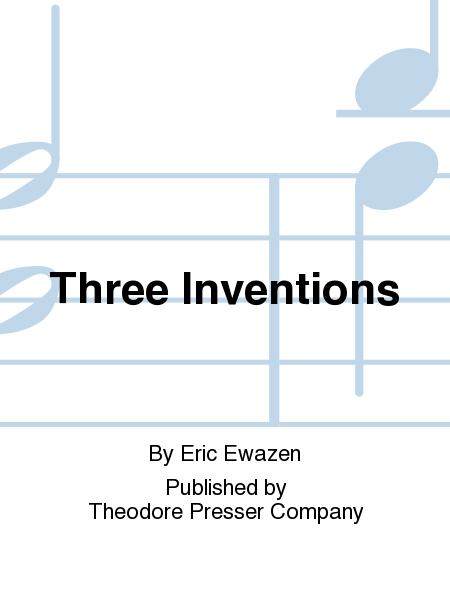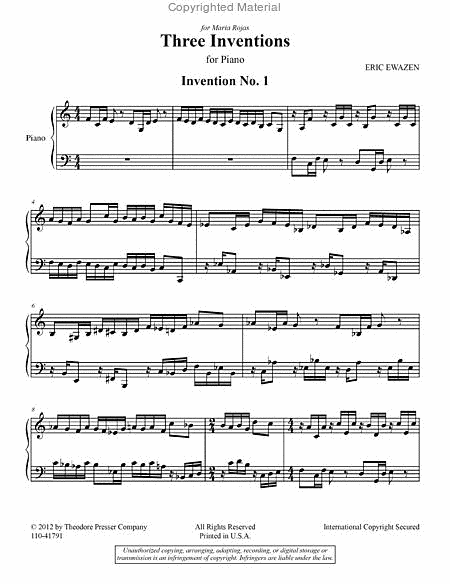Three Inventions
for Piano
-
Ships in 1 to 2 weeks
Details
Description
SKU: PR.110417910
For Piano. Composed by Eric Ewazen. Contemporary. Performance Score. With Standard notation. 11 pages. Duration 10 minutes. Theodore Presser Company #110-41791. Published by Theodore Presser Company (PR.110417910).ISBN 9781491134580. UPC: 680160597956. 8.5 x 11 inches.
Eric Ewazen’s THREE INVENTIONS were inspired by Bach’s Two-part Inventions, yet they sound thoroughly like Ewazen. Originally composed for harpsichord and adapted for piano later, Ewazen’s inventions maintain a pure “one note per hand” texture until their final chord, with strong-but-free imitative counterpoint between the two voices. While Ewazen may be best known for his wind music, he is a pianist himself, and composers’ works for their own instrument are a direct insight into how they write for their own performances. The harpsichord version of THREE INVENTIONS is also available as a separate publication.
THREE INVENTIONS was written for my dear friend Maria Rojas, who premiered the work on a faculty recital at Juilliard. Maria is both a pianist and a harpsichordist, and I first met her when she gave a demonstration of the harpsichord for the students in my theory classes.I’ve always been captivated by Bach’s series of Two-Part and Three-Part Inventions. With the Two-Part Inventions, I’m amazed how Bach could create such wonderful intricacy and counterpoint with only two voices. I consequently modeled my inventions after the counterpoint of Bach, involving the traditional contrapuntal devices he used: imitation, development, harmonic and modal shifts, fragmentation, and sequence, essentially creating a dialog between two completely equal voices conversing with each other!Bach wrote 15 Two-Part Inventions (as well as 15 Three-Part Inventions, not to mention the 48 preludes and fugues in The Well-Tempered Clavier!), and that’s just the start of his voluminous repertoire for the keyboard! I was happy just to write three!!!Each of my inventions has a distinctive mood. The first is in a relaxed, yet cheerful C Major tonality (as a nod to Bach’s Invention No. 1 in C Major); the second is heartfelt and lyrical; and the third invention (involving a Gigue rhythm in the compound meter of 12/8) is energetic, and full of life and spontaneity. The third is primarily in a minor tonality, resulting in a feeling of drama, bringing the THREE INVENTIONS to an exciting finale.


 Share
Share